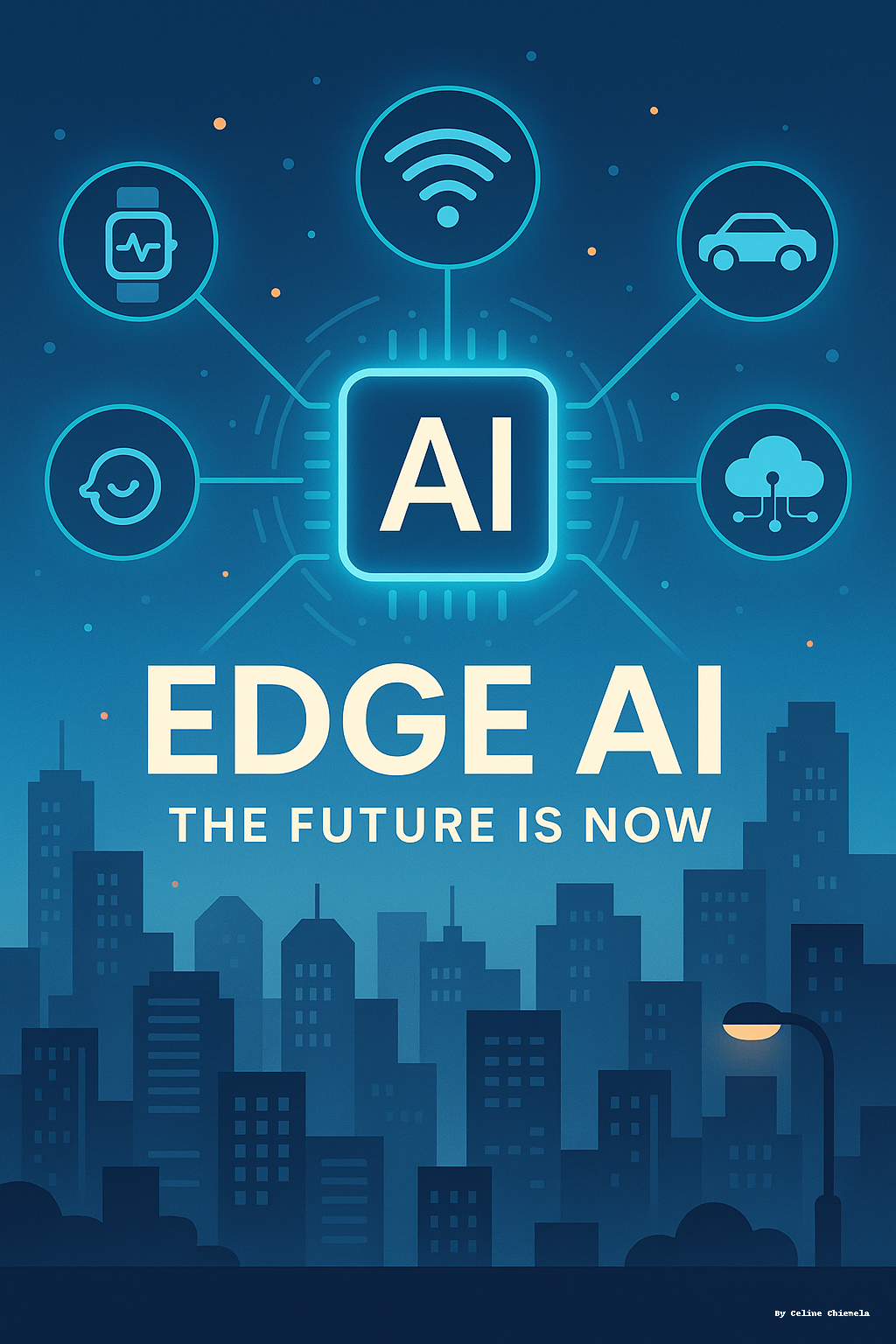Edge AI Is Redefining the Future: How Real-Time Intelligence Is Transforming Business and Technology.
Edge AI Is Redefining the Future: How Real-Time Intelligence at the Edge Is Disrupting Business and Technology.
In the not-so-distant past, artificial intelligence (AI) was the stuff of science fiction and centralized cloud servers. Today, a new revolution is unfolding quietly—but powerfully—at the edge of networks: Edge AI.
Edge AI is the convergence of edge computing and artificial intelligence, enabling machines to process data locally, without relying on cloud-based servers. It’s faster, more secure, and astonishingly efficient. From your smart fridge to life-saving medical devices, Edge AI is already reshaping the world around us.
—
What Is Edge AI?
At its core, Edge AI refers to running AI algorithms on local hardware devices—on the “edge” of the network—rather than sending data back and forth to a centralized cloud.
This means decision-making happens in real-time, directly on devices like smartphones, cameras, industrial sensors, drones, and even autonomous vehicles.
Imagine a self-driving car detecting a pedestrian and making an instant decision to stop. There’s no time to “ask” a cloud server—Edge AI handles that instantly, where the data is generated.
—
Why It Matters Now More Than Ever.
Edge AI is not just a technical advancement. It’s a critical evolution for industries where real-time insights mean life or death, profit or loss, efficiency or waste.
Here’s why it matters:
Speed: Local processing slashes latency. Think milliseconds—not seconds. In industrial automation, that’s the difference between preventing a disaster and reacting too late.
Privacy: Sensitive data—like medical or personal data—doesn’t need to leave the device.
Bandwidth Efficiency: Only necessary data is sent to the cloud, saving energy and reducing costs.
Resilience: Devices keep working even without internet, critical in remote areas or during outages.
—
Real-World Applications That Are Already Here.
Let’s bring it closer to home. Here are some fields where Edge AI is silently powering the future:
1. Healthcare:
AI-powered wearable devices monitor vitals and alert doctors instantly if anomalies are detected—no need for remote server checks. Portable ultrasound machines now use Edge AI to give real-time diagnostics in remote regions.
2. Manufacturing:
Smart factories are deploying Edge AI for predictive maintenance. Machines “know” when they’re about to fail and signal engineers, avoiding costly downtimes.
3. Retail:
Edge AI cameras detect customer behavior in real-time, helping stores manage queues, reduce theft, and optimize product placement—without compromising customer privacy.
4. Agriculture:
In developing countries, AI-enabled drones monitor crops, detect pests, and recommend treatments—all in the field, without internet access.
—
Challenges Holding It Back.
No revolution comes without obstacles. For Edge AI, the primary challenges are:
1.Hardware Constraints: Processing power in small devices is limited, especially in energy-starved environments.
2.Scalability: Managing updates and consistency across thousands of edge devices is complex.
3.Security: Local devices are more vulnerable to physical and network-based attacks.
Yet, as chipsets become smaller and more powerful, and 5G networks expand globally, these challenges are steadily being addressed.
—
The Future Outlook: Edge + AI + 5G + IoT
Edge AI doesn’t work in isolation. It’s part of a broader tech synergy: 5G enables lightning-fast connectivity, IoT connects billions of devices, and AI makes them smarter.
The future is a city where traffic lights talk to ambulances, factories run with minimal human input, and farmers get crop forecasts from drones in the sky—all powered by Edge AI.
—
Final Thoughts.
Edge AI isn’t just a buzzword. It’s a silent force transforming how we live, work, heal, and build. For businesses, adopting Edge AI is no longer optional; it’s the foundation of innovation and competitive advantage in a hyperconnected world.
As edge devices become smarter, more affordable, and universally connected, we’re witnessing the rise of a truly intelligent planet—one edge at a time.

